Meet the Wren
The explosively loud bird in the woods.
In the background of every quaint English rural drama, you’ll hear an iconic sound. Described as a bubbling, intense, rolling bird song full of whistles, churrs and trills, it effortlessly evokes feelings of nostalgia.
It’s easy to hear… but not so easy to find where it’s coming from.

A change to the song – to a ‘pew-pew-pew’ – indicates you’re getting closer to the source. The alarm call is coming from a nearby log. A small – no, tiny – round bird hops furiously from twig to twig, ‘shooting’ you with bursts of laser fire (pew-pew-pew-pew-pew!). It is, of course, our most common bird: the Wren.
Note: This little bird is so hard to photograph, I have sourced some images from the wonderful community here on Substack. I highly recommend following everyone who has contributed! And if you’d like to see a lot more Wrens, check out
’s collection on Flickr.ID features
The Wren is yet another ‘small brown job’, and this one is smaller than the others. But what it lacks in stature, it makes up for in style… and volume. It has a characteristically stubby tail that is often cocked straight up in the air. The roundness of the body and this little stub give it quite a distinct look.

There is subtle yet beautiful barring on its chestnutty wings and tail, and a pale eye stripe is often visible. The chest and tummy is a slightly paler brown, and the legs range from grey to orange to pink.
Wikipedia does a fantastic job of describing their calls and song:
The most common call is a sharp, repeated “tic-tic-tic”, similar but faster and with less isolated notes compared to that of a robin. When the bird is annoyed or excited, its call runs into an emphatic churr, not unlike clockwork running down. The song is a gushing burst of sweet music, clear, shrill and emphatic.
Feeding behaviour
Wrens mostly forage alone, though sometimes appear with a partner or near small flocks of tits and finches. They move quickly, prying into every little nook and cranny. They feed mostly on small insects, especially larvae, grubs and caterpillars. They do eat some seeds, but these make up a much smaller portion of their diet.
Skulking, singing and sunbathing
It’s a busy little bird, hopping around the undergrowth and along the ground, often on walls and around garden furniture. It sometimes perches up high to belt out its remarkable song. If you’re lucky, one might inspect the corners of your windows for spiders!

They also love to sunbathe, when the opportunity arises. You might see them splayed out on top of your shed roof or on artificial grass, for example – looking for all the world like they’ve crash landed.
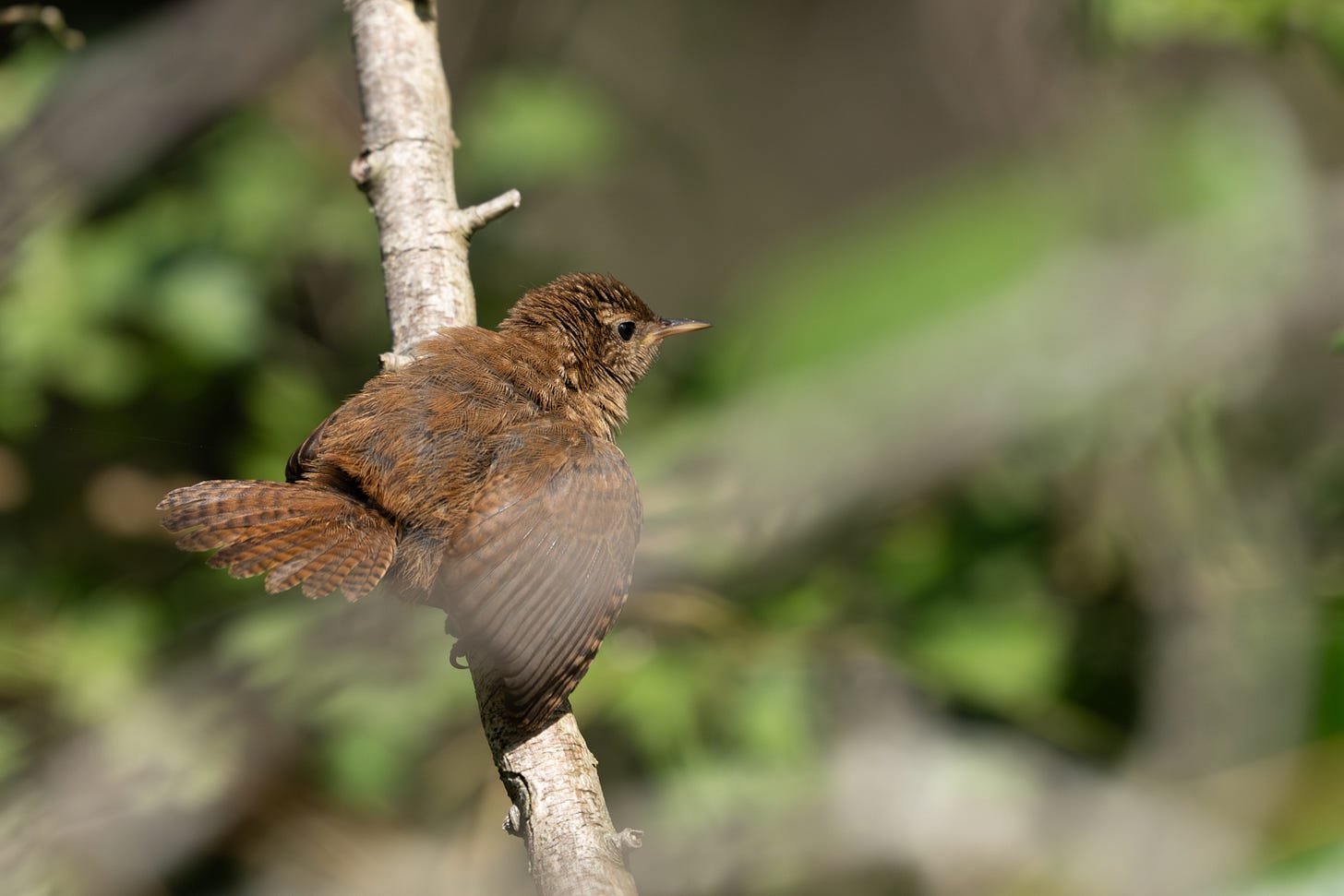
Sunbathing helps spread the oil produced by the preen gland, which keeps their feathers in good condition. As the temperature rises, it can also force parasites out from between the feathers.
Where to spot a Wren
‘Where’ to spot a Wren is not the challenge, as they live across the whole of the UK except the very highest highlands, year-round. How to spot a Wren is a different story!
Fortunately, they often have a favourite spot, so if you hear one singing its heart out then you’ll likely see one in that area if you visit often enough. For example, there is one that hangs around the conifers in my parents’ garden, and every now and then I catch a glimpse when I open the back door.
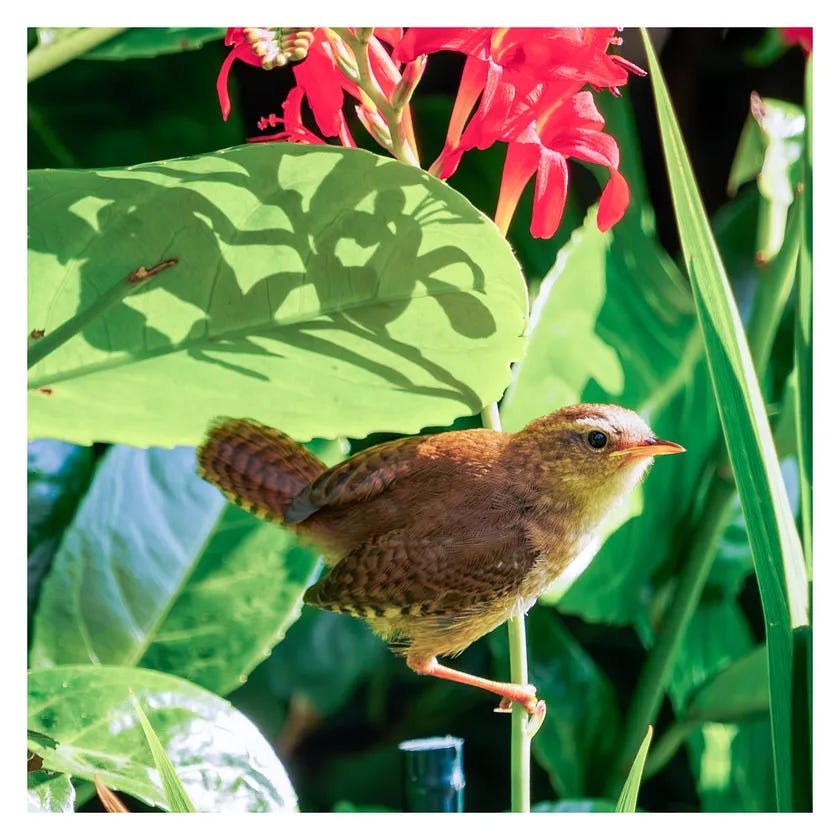
Putting a shallow bowl of water out somewhere near shelter can help, as many traditional birdbaths are far too deep for a wren to bathe in.
Alternatively, keep an eye out in shrubs and on piles of fallen logs when you’re out and about and you might even catch a glimpse of a Wren as it perches in the open - momentarily – to check you out.
They rarely venture high up into the branches, so look out for mouse-like movements at eye level and lower.
Easily confused with
Cetti’s warbler
Another explosively loud bird, Wrens and Cetti’s Warblers can be tricky to tell apart – especially as they often have twigs or leaves covering up their main identifying features! Cetti’s, however, have a slightly longer tail and no pattern on their wings or tail. They are bigger, too, and less likely to look like an almost perfectly circular bird.
Cetti’s are found near water, so while that can help you rule them out in dense woodland, if you’re near a river or pond it could be either.
Dunnock
The Wren shares a lot of behaviour with the Dunnock – skulking around in and under hedges, occasionally perching up high. But the Wren is much smaller, often has a yellow lower mandible (the bottom half of the beak) and has a paler throat/breast.
Dunnock’s have lovely streaky backs, while the Wren’s pattern is more delicate and shows mostly on the wings and tail. Dunnocks are usually grey around the face, too, while Wrens are brown and buff all over.
Bonus Wren facts
The Latin name, Troglodytes troglodytes, comes from the Greek for ‘hole dweller’.
Wren nests are often made in thick undergrowth, and are dome-shaped with a little hole at the front. They sometimes make use of man-made objects like old footwear or pots inside sheds, lining them with twigs to create a nest.
In winter, Wrens often roost together – cuddled up in corners and old nestboxes.
Our Eurasian Wren is the only ‘old world’ Wren (which is why it’s simply called ‘Wren’ without any additions descriptors).
There are 96 species of Wren in the world, including the Giant, Rufous, Tooth-billed and Happy Wrens.
Male Wrens build the nests, which females then choose from to select their partner. Both parents incubate the eggs and rear the chicks. However, a male Wren may have more than one female Wren raising chicks at the same time.
In folklore, a Wren and an Eagle competed for the title of King of the Birds by seeing who could fly the highest. The Wren flew on the back of the Eagle, only letting go to fly higher still once the eagle tired – winning the title with cunningness rather than strength.
The ‘king’ title follows the Wren everywhere. It is called Zaunkönig (king of the fence) in German, winterkoning (winter king) in Dutch and King of the winds in Japan.
There are thought to be up 113 million adult Wrens living in Europe.
Have you seen a Wren this week? Did you know they’re the most common bird in the UK?
My Posts are all free! But if you enjoyed what you read and would like to support my work, you can always buy me a coffee.


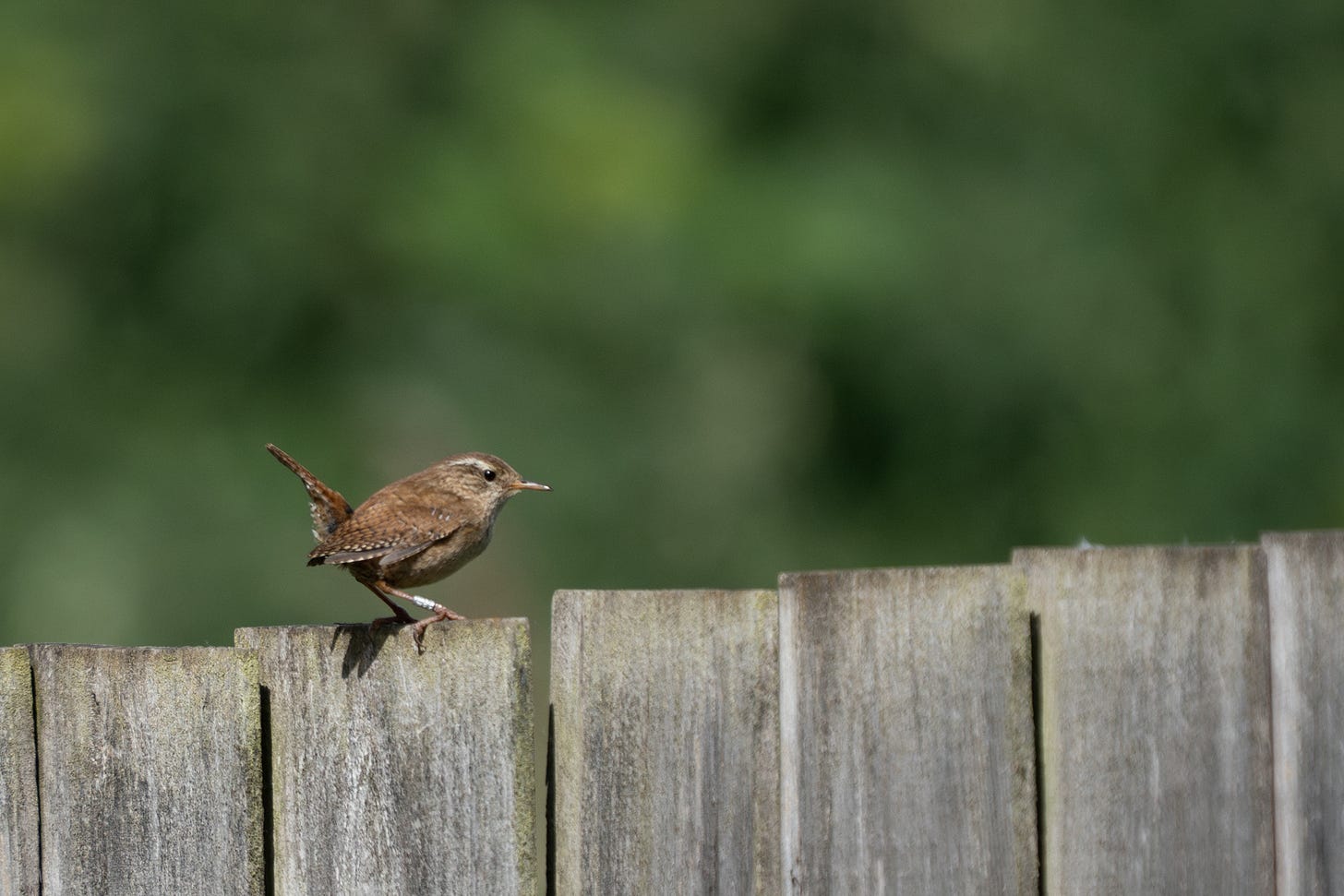
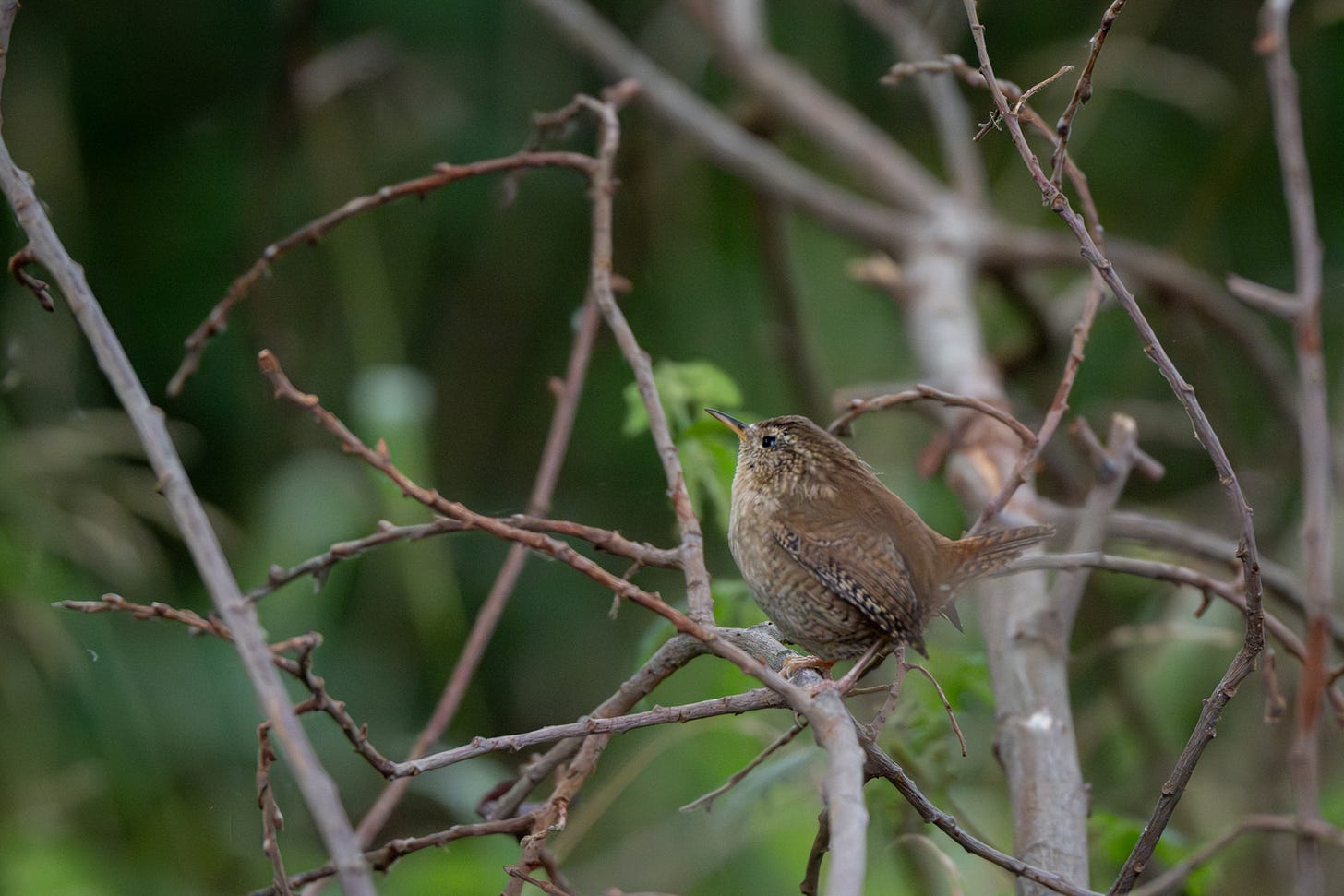
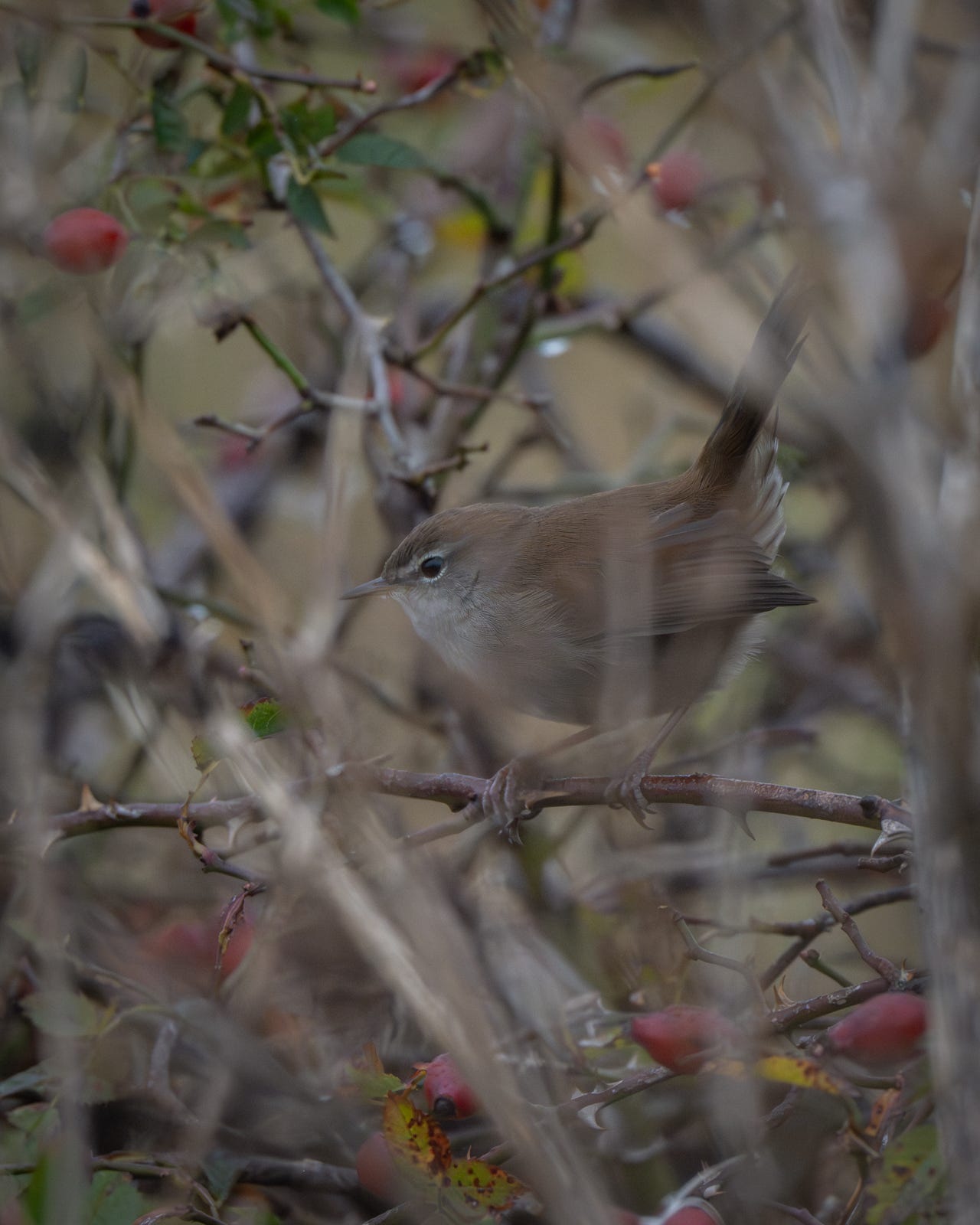
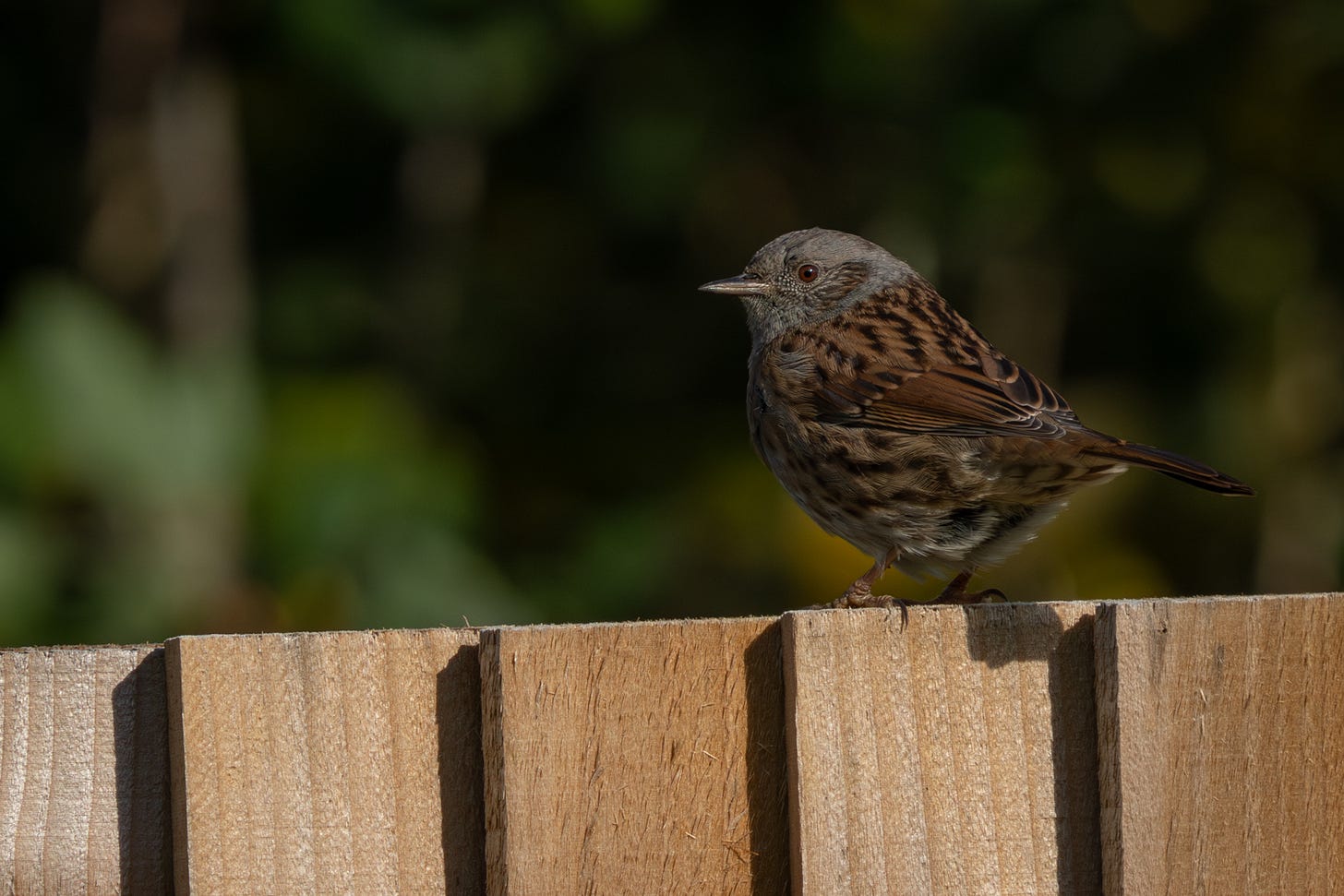
I had no idea Wrens were our commonest bird - thanks so much for teaching me something new about these adorable little birds ☺️
We have local Wrens along the river here, and we always know the spots where we'll hear each singing on our regular wanders. I'm always amazed by how loud their voice is, despite their small size! If we're lucky we do spot them sometimes too; their location betrayed by the loud rustling they make as they scuttle their way through the dry reeds, where they'll perch for a moment in the open, with their tail held high ❤️
I never tire of spotting these little beauties, no matter how many times I've sighted them over the years. They just have such an abounding charm 🥰
happy I could contribute! very informative!